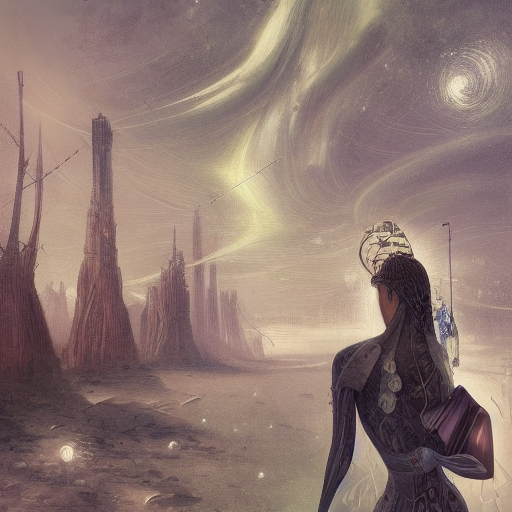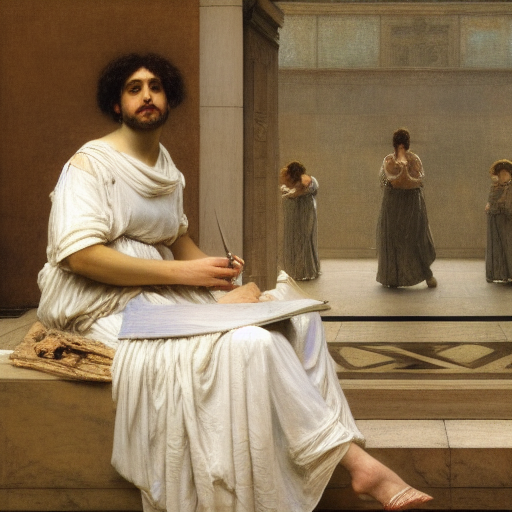
Aug 15, 4:18pm: Will AIs do 1000 full time jobs of writers and artists by the end of 2022 → Will AIs do 1000 full time jobs of writers and artists by the end of 2022
This one will be very hard to measure since
1. the data for usage for AIs will likely be private for at least some AIs
2. i'll have to come up with some metric to convert pages / pictures to hours
I'll do my best
For artists I mean
visual artists
musicians
sculptors
I'll consider full time 40 hours of work and i'll average it over a month (so 40,000 hours of output a week on average for the month of December)
Clarification, I'm talking about works of art used in commercial products where the hours worked is "how long would it have taken a human contracted to do this job to do")
🏅 Top traders
| # | Name | Total profit |
|---|---|---|
| 1 | Ṁ624 | |
| 2 | Ṁ69 | |
| 3 | Ṁ48 | |
| 4 | Ṁ37 | |
| 5 | Ṁ35 |
People are also trading
My company uses all AI-powered art now. We picked this as an alternative to mainly human-created art. This is a mix of purely Midjourney (for lower-quality images, like blog post headers), and midjourney --> human editing / human format translating, depending on the application. We haven't used stock images since Midjourney came out.
There's been computer-generated commercial output for decades. Texture generation in video games, POVray is 30 years old, Simply Wall St. has a bunch of text templates that they fill in with data to give the impression of human-written investing advice on thousands of stocks, SEO spammers use text templates with randomization to avoid spam detectors, voice assistants that convert audio to text and text to audio and have triggers to react to patterns in the text, etc.
Notably, "Dragon Dictate" has been around since 1990 for speech to text, mentions "AI‑powered speech recognition enables high‑quality transcription in 1/3 the time." in their marketing page. Wikipedia says: "AT&T deployed the Voice Recognition Call Processing service in 1992 to route telephone calls without the use of a human operator", and probably that's at least 1000 people.
So you are probably restricting the implementation to neural networks, transformers, text embeddings, made by a company that uses the term "AI" in their marketing, a gradient has to be calculated in the program somewhere(but then a naive raytracer involves a differential equation...), etc. Basically anything made by OpenAI, Google DeepMind, or a competitor that is compared to a product of these two companies(NovelAI, Stable Diffusion).
So my NO vote is that either this has happened for many decades already(resolving YES), or the very specific requirements only start to be possible to meet in Q3 2022 and nobody will have had time to switch their workflows over.
In particular, I don't think any business would shutter or that there would be net 1000 full-time job equivalents created if OpenAI, NovelAI, SD, etc. disappeared today to replace the missing artwork. They became popular somewhat late into 2022, and nobody's had time to start relying on them yet.
You might see people selling stock images or gawking at individual artworks, but that doesn't seem to be using the output in a commercial product. If that counts, I could generate 1 million artworks with SD, and list them for sale in a store.
The same question in 2023 I would probably predict YES.
@Mira Was thinking about whether to double-down, and I decided "If it was true this year, then it was true decades ago" is not really a good argument for NO.
In particular, I remember a lot of video game developers around 2016 were using style transfer algorithms for texture synthesis, those would've used CNNs(and so count as "AI"), textures/games count as art, and they would've used those algorithms to make thousands of variations(and so meet the 160k hours requirement). They're probably still using texture synthesis algorithms today.
And even if you limit it to the ones released this year, GPT-3/ChatGPT is included for writing, and I suspect SEO spammers have had it write thousands of variations like "Can I feed lawn grass to my rabbit?" That's even a direct job replacement, because I know they used to hire out on freelancer sites like Fiverr by the thousands. I would even buy YES @ 10% on this one being verified by OpenAI at some point next year, because I know they watermark all those articles with the choices of words that it outputs.
Not sure about {MidJourney, NovelAI, Stable Diffusion, DALL-E}, but 160,000 hours is 16,000 high-quality artworks if it takes them 10 hours to draw. I would buy NO @ 85% for a claim like "Were 16k artworks generated in December 2022 by any of those 4 specific programs, custom-made for any commercial product with at least 100 affiliated sales?", but that's too weak of a claim to sustain for this market along with the other factors.
This alone may move the needle: https://www.axios.com/2022/12/05/adobe-ai-made-stock-images
Adobe is already selling images generated by AI. That said, how do you measure doing the full-time jobs? That is, if an artist generates 10x the images, then do we count 9/10 of their time to the generative AI?
I only end up using (in the sense of exposing to other eyes) maybe 1 out of 100-1,000 images I generate with NovelAI.net/image, but I suspect that even at the 0.1% use rate, and counting each image produced as having required 20 hours of equivalent human labor (1/2 artist-week), it will be the case that NovelAI.net/image has already done 90 * 1000 hours of human labor, and it's been around less than a month. Though I could not yet track down a half-remembered source for something in the range of 100,000,000 images generated by NovelAI.
Here's a sample of the technology being used; all images posted by the "Iarwain" account (mine) are NovelAI-generated. https://www.projectlawful.com/posts/6415
How many artist-months would be represented by the output that made it into this article? https://www.djfood.org/fantasy-jodorowsky-tron-visualisations-by-johnny-darrell/
@EliezerYudkowsky Did you previously spend money paying artists to draw art for your forum posts?
@Adam I tried. The result was this: https://i.imgur.com/5HeP9cG.jpg.
It cost about $1000, and the result was not good enough that I'd try doing it again at that price point. I did post it inside the story, but I'm not going to link to that point in the story because spoilers.
@EliezerYudkowsky so the AI is not "doing fulltime jobs of artists and writers", any more than the engine in your car "does the job" of a horse
Okay, I'm slightly confused by this market's intent. I think it's pretty unlikely that AI is going to genuinely replace many artists (a few on the margins, perhaps) in the near term but I expect it to be a substantial improvement to their productivity - so, art will probably get cheaper, rather than there being fewer artists, see?
I'm not sure how that falls on your resolution criteria, though. Is the idea that AI is going to actually cause at least a 1000 job reduction in the employed artist workforce, or that it will do the equivalent labor of 1000 artists? Because option one is improbable (certainly much less than the current market %) and option 2 is almost trivially true, depending on how you count it.

"Apelles painting an automaton, Museum of Fine Arts, Lawrence Alma-Tadema, 1868"
Every time I use Stablediffusion to generate a pic for my Manifold comments, an AI is substituting for 60 hours of painting labour. But this isn't something I would bother hiring an artist for if it wasn't free, so is the AI really "substituting" for anything?
Let's say DALLE-2 does the equivalent of 10 hours of work every time you use it. I think this is fair, probably an underestimate, it makes 4 images that can be pretty high complexity. That requires 4,000 uses per month to reach the threshold. The free tier gives a user 15 uses per month, and they can buy 115 more uses for $15. As of July 12, 100,000 people had access to it, and OpenAI claims they want to give 1 million people access. At 100k users, 1 in 25 users need to use 1 credit a month to reach the threshold.
Do arbitrary uses of DALLE-2 count if they're not actually being used to replace existing jobs?
@horse People do not get paid for generic output they get paid for results, so if DALLE is called 1000 times but only 1 picture has been used in a product that is 20ish hours of work replaced not 10,000 hours work (i'll try and update the conditions later)
I don't think it matters if people are actually being replaced (as an aside i think AI will probably cause not that much disruption to workforce participation) it matters how much work actually gets done.
@BenjaminKadish People do get paid for generic output, though? I can't get the same results as DALLE without paying someone to do it. People commission artists to produce art for personal non-commerical use all the time, although as far as I know that's not the main income stream for most artists.